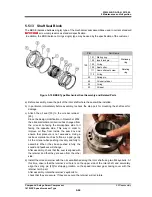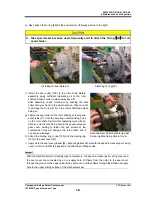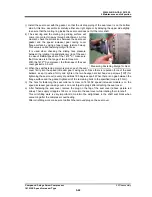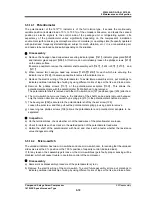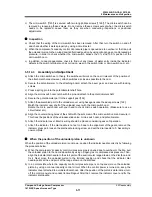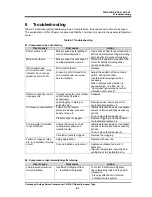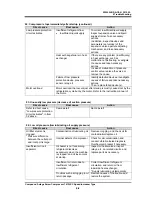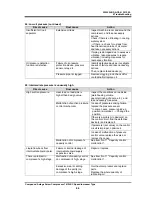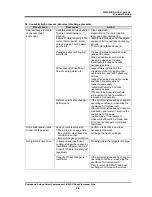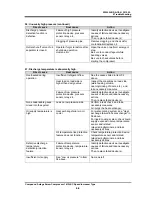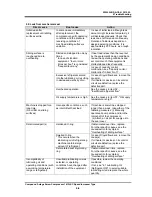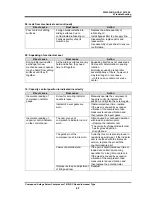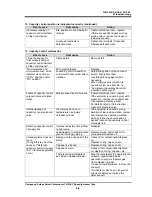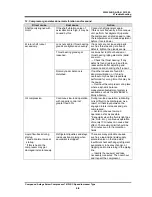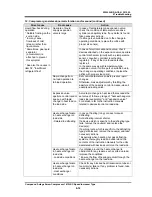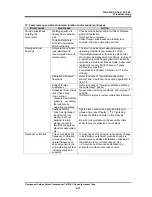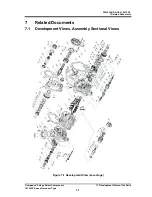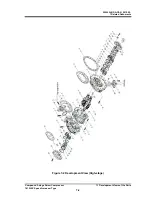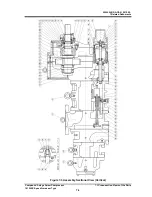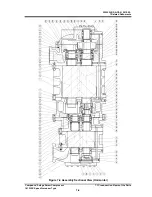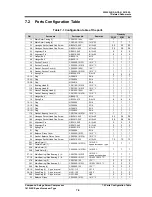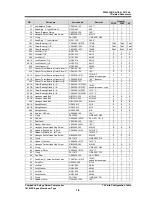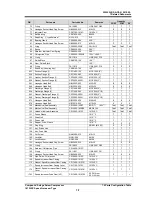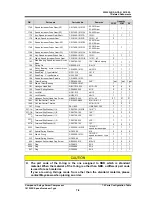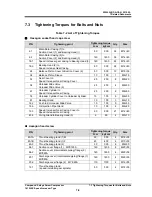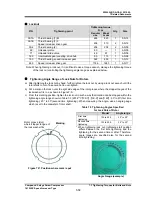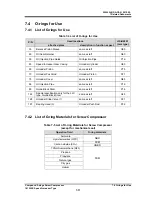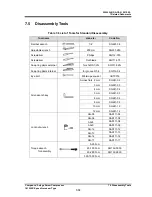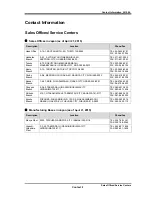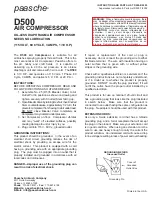
2202L5JE-DA-C5-N_2015.05.
6 Troubleshooting
Compound 2-stage Screw Compressor 1612LSC Speed Increaser Type
6-9
12: Compressor generates abnormal vibration and/or sound.
Direct cause
Root cause
Action
Shaft poorly aligned with
motor
If the shaft vibration value of
axial direction is high, it may be
caused by this.
Conduct shaft alignment again.
If this occurs frequently in monocoque
unit, perform hot alignment (operate
the compressor at rated speed to raise
the temperature and make adjustment
before it cools down).
M rotor shaft runout
excessively.
Lock nuts and/or thrust bearing
glands are tightened unevenly.
If lock nuts are not loose and parts
such as thrust bearing are free of
defects, tighten the glands evenly.
Thrust bearing glands get
loosened.
Lock washer tooth not bended, or
thrust bearing rolling elements (balls)
are worn.
→
Check the thrust bearing. If any
defect is found, replace it, and then
reassemble it after adjusting end
clearance and checking shaft runout.
Rotor dynamic balance is
disturbed.
If no other causes are found for
abnormal vibration, or if on-site
overhaul only has been repeatedly
performed for a long time, this may be
the cause.
→
Overhaul the compressor at a place
where a dynamic balance
measurement/adjustment system is
available, such as the MAYEKAWA
Moriya Factory.
Oil compression
Continuous low-load operation
with capacity control not
greater than 30%
During low-load operation, lubricating
oil is difficult to be discharged. As a
result, oil that stays between the
engaged rotors increases and gets
compressed.
→
Avoid continuous low-load
operation as far as possible.
* Especially when the fluid is light gas
(He, NH3, etc.), continuous operation
of merely 10 minutes can cause bad
effect. The maximum limit should be
30 minutes even for fluorocarbon
fluids.
Liquid flow-back during
startup
* Loud abnormal noise at
startup.
* If this is heard, the
compressor may get
damaged instantaneously.
Refrigerant liquefies and stays
inside upstream piping when
equipment is stopped.
There are many probable causes,
such as a leak inside liquid supply
solenoid valve on the load side,
insufficient heat exchange (refrigerant
evaporation) in heat exchanger, or
trapping due to mis-piping in the piping
line.
→
Identify the cause(s) and take
necessary measures. Then overhaul
and inspect the compressor.

